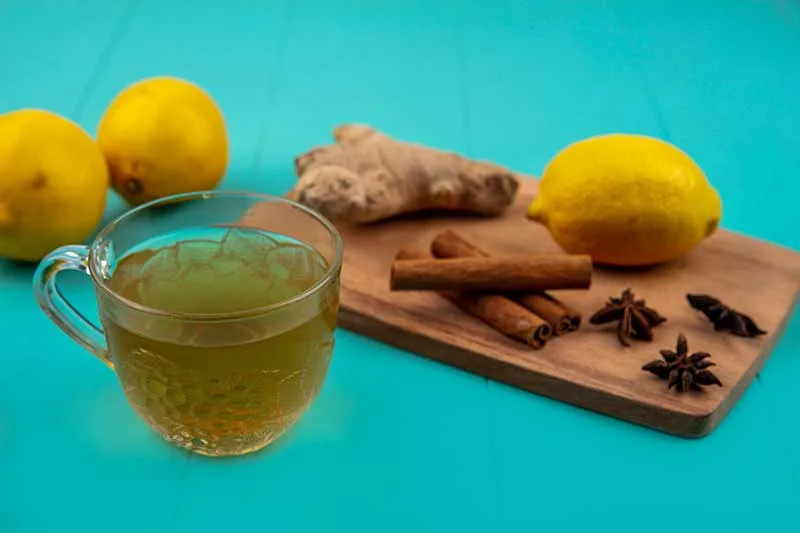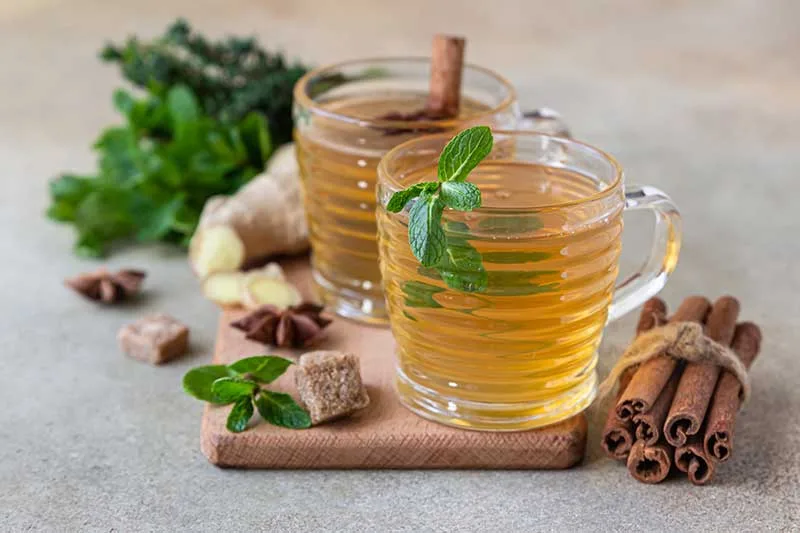Peppermint Tea 101: Benefits, Brewing Methods, and More
Peppermint tea is one of the most popular herbal drinks and has attracted many tea lovers because of its pleasant taste and health benefits. Peppermint tea is made from the leaves of the peppermint plant. Also known as Mentha Piperita, this plant is a breed of water mint and mountain mint. In addition to its fresh smell and special taste, peppermint is also used as a pleasant drink in many cultures.
On the subject of health benefits, peppermint’s healing properties as a natural have been known for thousands of years. We’ll explore the health benefits in this article, but in general, peppermint tea is a medicinal facility in a cup with many properties that help improve the quality of your life.
Let’s explore the origins, healing properties, and brewing methods of peppermint tea and see why this drink is still popular in the 21st century.
Origin and History of Peppermint
Peppermint (Mentha piperita) was first cultivated in Europe, but today, it is no longer limited to a particular ecosystem. It is now cultivated worldwide and is available everywhere at a relatively low price.
The use of this plant goes back to ancient times when the Egyptians used peppermint as a medicinal plant. Also, in ancient Greece and Rome, peppermint was very popular both for its medicinal properties and its refreshing flavor when added to food as a spice. By the 18th century, peppermint became widely known in Europe, and British gardeners cultivated it regularly, where it became a popular herbal tea we know and love today. Many started drinking this herbal tea instead of good old black tea.
What Are The Peppermint Tea Health Benefits?
Peppermint tea is used to treat all kinds of diseases and problems due to its many properties. In today’s world, peppermint tea has become available to everyone not only as a delicious and relaxing drink, but also as a natural remedy for many diseases and health problems.
Here’s a list of health benefits of peppermint tea when you drink it regularly:
- Improves digestive problems: Peppermint tea helps digestion. This plant relieves stomach pain and bloating, and also helps improve bile flow. If you have digestive problems, drinking peppermint tea can help you overcome many of the symptoms.
- Reduces muscle & nerve pain: Peppermint has natural anti-inflammatory properties that help reduce muscle and nerve pain. This property goes beyond just peppermint tea. Studies have shown that using peppermint oil reduces tension headaches and migraine.
- Reduces nausea & vomiting: Peppermint is an effective treatment for nausea, especially during pregnancy and after chemotherapy. Drinking peppermint tea helps to reduce nausea and vomiting.
- Helps cold and flu symptoms: Menthol, the main ingredient in peppermint, acts as a decongestant, helping to reduce nasal congestion and make breathing easier. It is also an expectorant that helps expel phlegm from the lungs.
- Reduces anxiety and stress: Some research shows that peppermint can reduce anxiety and stress. Using this plant in the form of tea or oil helps to relax and reduce feelings of anxiety.
How to Brew Peppermint Tea?
Brewing a cup of peppermint tea is simple. You don’t need any special teaware or appliances. All you need is fresh or dried peppermint leaves, boiling water, and a tea infuser, a tea ball, or a French press.

Let’s explore the most popular peppermint tea recipes.
Simple Peppermint Tea
This is the simplest peppermint tea recipe. To prepare it, pack your teainfuser with fresh or dried peppermint leaves, put it in a cup, and fill it with boiling water. Let it steep for 5 to 10 minutes before removing the infuser and drinking your tasty cup of herbal tea.
If you don’t have a tea infuser, fill 1/3 of your teacup and pour boiling water over it. Then strain it and enjoy your peppermint tea.
Peppermint Tea with Honey and Lemon
If you want to brew a cup of sweet & sour peppermint tea, brew the tea as above. Then add a teaspoon of honey and squeeze one half of a lemon into the cup and stir it. You can also drop one or two slices of lemon as you’re brewing your simple peppermint tea. However, not many people prefer this method as the lemon pill may make peppermint tea bitter.
My personal choice has always been sweet & sour peppermint tea. I’m certain you’ll love the taste. Peppermint tea with honey and lemon is especially good if you have a sore throat and other cold symptoms.
Spicy Peppermint Tea:
The alternative taste to honey and lemon is cinnamon or ginger. Spicy peppermint tea is great if you want to get the best out of the health benefits. Add half a stick of cinnamon or a few thin slices of fresh ginger. Steep it until the tea reaches your desired drinking temperature. You’ll experience a unique, fresh, and spicy taste, unlike any other herbal tea.

Cloves are also a popular addition to your peppermint tea, but avoid drinking too much of it or brewing your tea with a large amount of cloves.
Precautions and Side Effects
While it is safe to drink multiple cups of peppermint tea throughout the day, you should still take some precautions to prevent the potential side effects.
Here’s a summary of what to consider:
- Children and pregnant women: Peppermint tea may cause stomach irritation and, in rare cases, breathing problems. Therefore, doctors often advise children and pregnant women not to drink peppermint tea, especially spicy peppermint tea.
- Drug interactions: Peppermint may interact with some medications, especially antacids, blood pressure medications, and pain medications. Before using peppermint along with prescription drugs, it’s best to consult your doctor about drinking it.
- Specific digestive problems: People who suffer from diseases such as gastroesophageal reflux disease (GERD) should avoid peppermint, as this herb can aggravate symptoms.
Final Thoughts
Finally, in addition to being known as a tasty and aromatic drink in various cultures, peppermint tea has become very popular with its amazing properties as a natural remedy for many problems, including digestive problems, headaches, and nausea. This tea is a combination of water mint and mountain mint and has long been used in traditional medicine and various cultures. The benefits of peppermint tea are extensive, including reducing bloating, relieving menstrual cramps, improving digestion, and even helping to relieve cold and flu symptoms.
In addition to the mentioned cases, peppermint helps to reduce stress and anxiety and treat cold and its symptoms with its calming effects. Therefore, the use of peppermint tea is very useful and beneficial not only in cases of illness but also as a daily drink. The method of brewing this tea is very simple, and you can use fresh or dry peppermint leaves. Peppermint tea can get a pleasant taste by adding a spoonful of honey or lemon, and increase its healing effects. Also, using this tea during the day helps to maintain the general health of the body and strengthen the immune system. Although peppermint tea has many benefits, it should be noted that, like any other natural treatment, its use should be done with caution.
Some people may be allergic to peppermint, and people who have special digestive problems should consult their doctor before consuming it. Finally, peppermint tea is a great option for people who are looking for a healthy and beneficial drink because, besides its delicious taste, it also has many healing properties.
